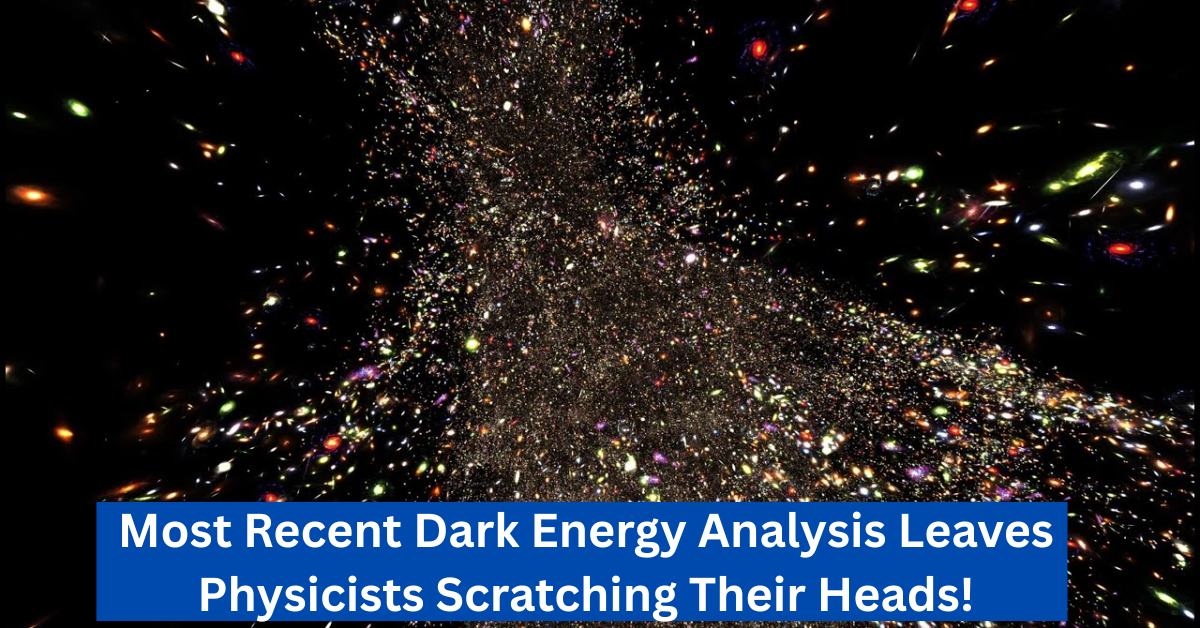In 1929, astronomer Edwin Hubble made a discovery that changed how we see the universe. He found that galaxies are not standing still—they’re moving away from us, and the farther away a galaxy is, the faster it’s moving. This observation led to the idea of an expanding universe, and later gave rise to the famous Big Bang theory.
The rate at which galaxies move away is known as the Hubble Constant, which became a key part of our understanding of how the universe works. For many years, scientists believed that the universe’s expansion was slowing down. But in 1998, a surprising discovery shocked the scientific world: the expansion of the universe wasn’t slowing down—it was actually speeding up.
Scientists introduced the concept of dark energy to explain this mysterious force that seemed to be pushing galaxies apart.
What Is Dark Energy?
Dark energy is an invisible force believed to make up about 70% of the universe. It’s responsible for making the universe expand faster and faster over time. To include dark energy in their theories, scientists developed the lambda-CDM model, which became the standard model of cosmology.
- Lambda (λ) represents dark energy.
- CDM stands for cold dark matter, which is another invisible substance that helps galaxies stay together.
This model worked well. It explained many observations about the universe, including how galaxies form and behave. Scientists believed that lambda (dark energy) was a constant, meaning its strength never changed.
The DESI Project and New Observations
In 2021, a massive international effort began through a project called DESI—the Dark Energy Spectroscopic Instrument. This project aimed to map millions of distant galaxies, study their movements, and collect data to understand dark energy better.
Early findings from DESI in 2023 hinted at something unexpected: dark energy may not be constant. This raised serious questions.
Now, with much more data available, a new analysis has confirmed that dark energy appears to be weakening over time within the current model. In other words, the force pushing galaxies apart might be slowing down.
Why This Matters: The Bigger Problem
This new result has made many scientists nervous and confused. If dark energy is changing, it could break some basic rules of physics that have guided science for decades.
One such rule is called the null energy condition. It says that energy cannot travel faster than light. This law is very important for keeping the universe stable. But certain changes in dark energy might violate this law, which could lead to some strange and dangerous possibilities, such as:
- Gravity becoming repulsive instead of attractive.
- Time getting messed up, where effects happen before their causes.
- Causality being broken, which challenges the very idea of logic in the universe.
Because of these risks, many physicists are now trying to find other explanations for what the data is showing.
Are There Other Possible Theories?
Yes. A few ideas are being considered to explain the strange data without throwing away everything we know.
1. A Fifth Force in Nature?
Scientists know of four basic forces in nature:
- Gravity
- Electromagnetic force
- Strong nuclear force
- Weak nuclear force
Now, some experts are suggesting the presence of a fifth force that we have yet to discover. This new force could be responsible for dark energy’s strange behavior.
2. Is Dark Matter Decaying?
Another possibility is that dark matter, which makes up a big part of the universe, might be unstable and could be decaying slowly. If true, this decay could look like changing dark energy to our instruments. Since we know very little about the true nature of dark matter, this is also being seriously explored.
Both these ideas are hypotheses, meaning they haven’t been proven yet but are worth studying.
How Big Is This Discovery?
This new finding is not just a small update to our understanding of the universe—it’s a major issue. The current model, lambda-CDM, has worked for over two decades. It has explained:
- The structure of the universe
- The spread of galaxies
- Cosmic background radiation
- How matter clumps together in space
If dark energy really is changing, the entire model may need to be revised or even replaced.
This kind of scientific challenge is not new. Throughout history, theories have been updated when new evidence came in—like when Newton’s laws were updated by Einstein’s relativity.
But this time, the change could be much bigger and affect how we understand everything, from space and time to the future of the universe.
What’s Next for Scientists?
Cosmologists and physicists are now working hard to:
- Understand exactly how dark energy is changing.
- See if the current model (lambda-CDM) can be adjusted.
- Develop new models that explain everything we observe, including this new data.
- Use more instruments and telescopes to gather fresh evidence.
The DESI project will continue to scan the skies and provide even more detailed maps of galaxies. Other space telescopes, like the James Webb Space Telescope, may also help shed light on this mystery.
This process will take time, but the scientific community is excited. Challenges like this often lead to new discoveries, better understanding, and sometimes a complete revolution in science.
Final Thoughts: The Universe Still Surprises Us
One thing is certain—we don’t know everything yet.
Just when we thought we had a good understanding of the universe, a new twist appears. This new evidence about dark energy reminds us that the cosmos is full of secrets, and we are still in the early stages of discovering how everything works.
As scientists continue to investigate, the rest of us can only watch in wonder and wait for what comes next. The universe, it seems, still has many stories left to tell.

Deepak Grover is a dedicated content writer at OTE News, specializing in government affairs, public policy, and current events. With a keen eye for detail and a passion for factual reporting, he ensures readers receive accurate and insightful news. Deepak holds a degree in Political Science and has experience in research-driven journalism.
When not writing, he enjoys reading historical books, exploring hiking trails, and staying updated with global political trends. His commitment to ethical journalism makes him a trusted voice at OTE News.




